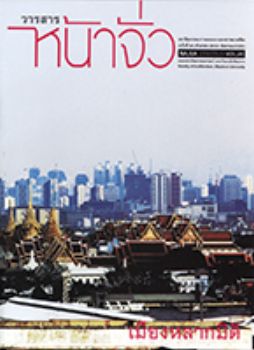ผังเมืองนํ้าแห่งมหานครฮานอย
Keywords:
น้ำ, ฮานอย, เวียดนาม, แม่น้ำแดง, Water, Water Urbanism, Hydraulic, Hanoi, Greater hanoi, Red River Delta, VietnamAbstract
Water Urbanism of Hanoi
Oppatham Rattanasupa
Faculty of Architecture, Silpakorn University
The city of Hanoi is presently facing incredible challenges on its growth: The existing urban core is ways below its carrying capacity and infrastructure provision can simply not keep pace with its on-going urban transformations. imultaneously, there are significant challenges concerning water resources: The threat posed by flooding in urban areas due to climate change and the rise of sea level which is potentially catastrophic. In addition, there is the issue of deteriorating water quality (rivers, canals, and lakes) in and around the city.
Administratively, the city recently altered its boundaries by tripling the area in question, presumably in a bid to address the question of expansion of the city. This action in itself, however seems to have sparked off a series of related events:
Land use alteration (from agricultural to urban), spiralling property values, speculative property holding, increased rural urban migration, rampant development and so on. Presently, the new city boundary caters for a population of 6.2 million inhabitants; it has been projected that by 2030, this number will rise to 10 million, and 15 million by 2050.
The expansion of Hanoi is therefore clearly underway, and the recent administrative alterations may just have accelerated this phenomenon. The force of urbanisation in this context is simply inevitable. What remains crucial is the manner in which the city (and the Red River Delta at large) prepares itself to accommodate and structure the imminent.
It is known that Hanoi has been historically structured on its contextual landscape elements; mountains and water. It is also important to note that; the fact that the city, in its contemporary form of development, seems to have completely lost its landscape heritage, a component fundamental to its very existence as part of the Red River Delta.
In addition, the conventional master planning approach has; again, proved that it is insufficient to accommodate the growth of the city. In the light of this, it is highly unlikely that yet another new master plan will address the challenges facing the city.
The question is – “Is it possible to revisit landscape infrastructure as a tool to guide growth and development in Hanoi and beyond?”. If so, what landscape elements would be the best to suited the structure of this expansion? What forms would these elements take, and what are the possibility that these expansion could adapt to the Delta?





